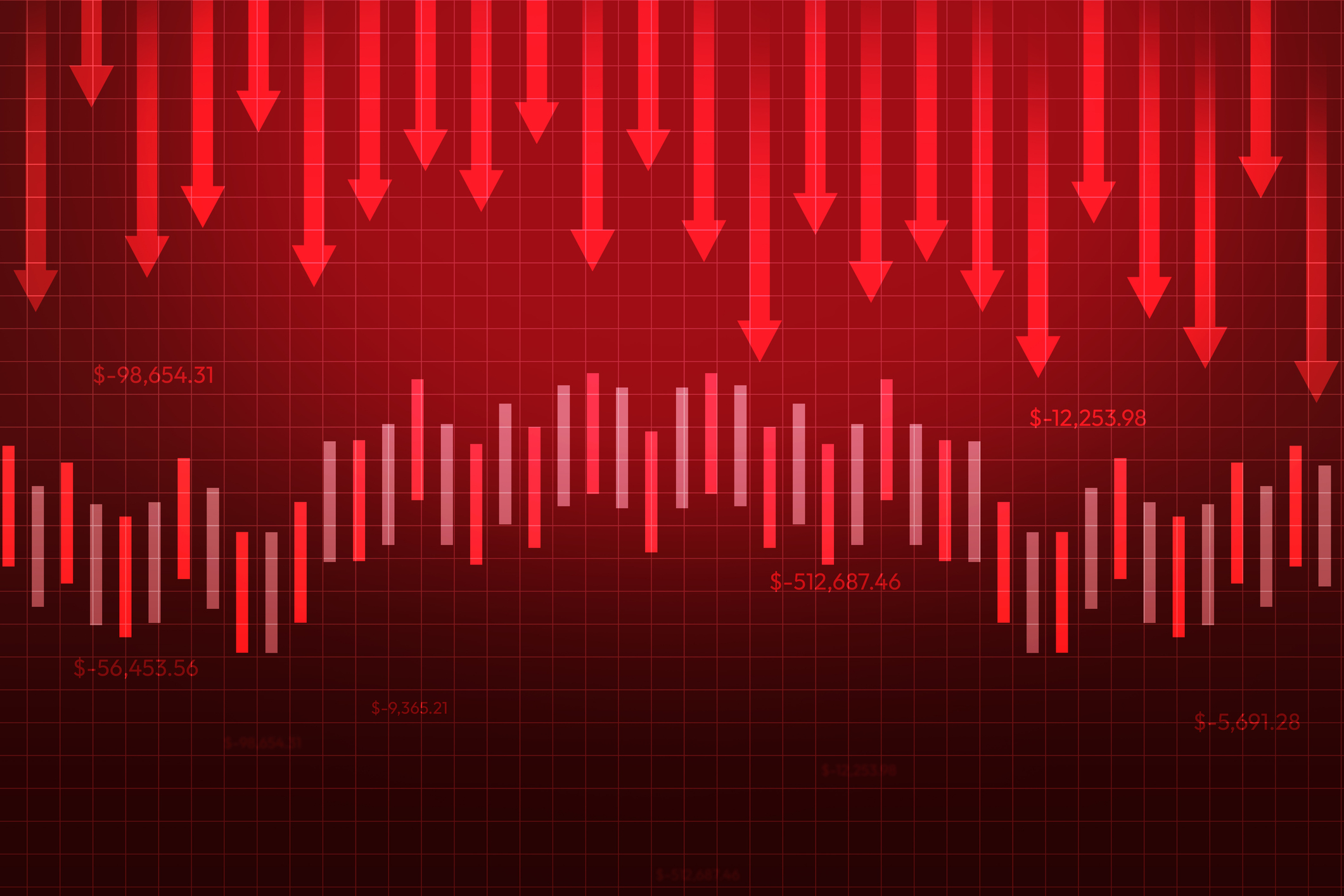5 Ways to Beat This Market
These experts cut through the noise with their approaches to picking stocks today.

These are dark times for investors. Without rehashing the events of the past year, suffice it to say that every so-called "safe" investment has proved to be anything but, leaving investors with nowhere to hide. With stock and bonds, you likely face further drops. But if you move into cash, you face the pain of locking in losses and missing out on any rallies.
To make matters worse, investors' guiding light in normal times, the price-earnings ratio, is today about as illuminating as a firefly in a blizzard. "The traditional valuation metrics that you apply to individual stocks aren't going to work in this market," says economist Ed Yardeni, president of Yardeni Research.
The future of corporate profits is highly uncertain, plus analysts' profit estimates appear to be overly optimistic across the board. Or, as Yardeni puts it, "Analysts tend to be better attuned to how their companies are doing in good times than in bad, so in a recession, their expectations tend to lag the market."
From just $107.88 $24.99 for Kiplinger Personal Finance
Become a smarter, better informed investor. Subscribe from just $107.88 $24.99, plus get up to 4 Special Issues

Sign up for Kiplinger’s Free Newsletters
Profit and prosper with the best of expert advice on investing, taxes, retirement, personal finance and more - straight to your e-mail.
Profit and prosper with the best of expert advice - straight to your e-mail.
From sunny Warren Buffett to former perma-bear Jeremy Grantham, there's broad consensus among experts that stocks are dirt cheap, or at least attractively valued. The trick for individual investors is to sniff out the best values. Here are five expert solutions.
1. Follow the dividends. Just because P/Es are unreliable doesn't mean picking stocks has to be difficult. You need to focus on only one figure in this market: a stock's dividend. So says Sam Stovall, chief investment strategist at Standard & Poor's. "Reinvested dividends have accounted for 40% of the total return of the S&P 500 for the past 70 years," he points out.
It's a simple approach to buying quality companies on the cheap, and the grunt work has already been done for you. S&P maintains a list of "Dividend Aristocrats" on its Web sites, composed of companies that have consistently hiked their dividends in each of the past 25 years. These won't be the stocks with the most pop when the market turns, he says, "but if you're building a long-term portfolio, you want to stick with high quality."
2. Think like Buffett. Warren Buffett has often said that he tries to be fearful when others are greedy and greedy when others are fearful. So if you want to channel the Oracle of Omaha, now is the time. Larry Coats, manager of Oak Value fund, says today Buffett is probably focused on companies that generate a lot of free cash -- that is, earnings plus depreciation and other noncash charges, minus the capital spending needed to maintain the business. "As management, you can't pay down debt or pay dividends with reported earnings -- it's cash that determines what you can do," he says.
Buffett-minded investors should also focus on any company that has built a strong "moat," or competitive defense, around its business. "A company's ability to control its own future is largely determined by its competitive position," Coats says. Industry leaders and solid brand names are prime hunting grounds.
Such well-positioned companies tend to run more predictably than others, so sophisticated investors can value them by estimating the cash they'll generate over the next several years. That's how Coats does it, and by that measure he likes Diageo, a liquor company that produces such well-known labels as Smirnoff, Johnnie Walker and Tanqueray. The stock (symbol DEO) closed at $53.68 on November 12.
He also likes Internet-hardware maker Cisco (CSCO), at its recent price of $16.55. For every dollar of Cisco's sales, "you can take 20 cents of free cash flow at the door and set it aside for shareholders," he says.
3. Smooth out the road bumps. No one can tell what 2009 will look like, but by 2010 the world will probably have inched closer to normal. So reasons Lew Altfest, president of L.J. Altfest & Co., a New York financial-planning and investment-management firm. He says you can still value companies on projected earnings as long as you look far enough into the future to smooth out near-term uncertainties.
Build a margin of safety around the stocks you buy today by sticking to large companies, Altfest recommends. He browses among the 200 largest companies in Standard and Poor's 500-stock index and compares the projected three-year earnings-growth rates of specific companies to others within the same sector.
Using this approach, he likes Avon Products (AVP), IBM (IBM), Nike (NKE) and Aflac (AFL), all of which are projected to expand earnings at a double-digit clip over the next five years. "That doesn't mean they couldn't go down more, but you'll be very happy in two or three years," he says.
4. Play defense. David Chalupnik, head of equities at First American Funds, says investors should remain defensive with their stock portfolios. He likes consumer-staple and health-care stocks, which have conventionally been regarded as good hiding places from which to weather a downturn. This time around has been no exception: Consumer staples and health care have been the best-performing sectors of the S&P 500 year-to-date, losing 18% and 26%, respectively.
He also notes that earnings estimates for such companies tend to be more reliable than those for more cyclical sectors. For example, Johnson & Johnson, the ultimate foul-weather stock, beat analyst estimates of profits per share by a few cents in each of the past several quarters. At a recent price of $57.92, the stock (JNJ) trades for 12 times estimated 2009 profits.
5. For value, avoid the pack. Ed Yardeni counters that the traditionally defensive areas have become too crowded. "It's a little late to be playing defense," he says. "Health care and consumer staples are the obvious places to be, but they're not cheap anymore."
He prefers the more-loathed sectors. "Materials, energy and industrials most likely hold the best values right now," he says. Many of those stocks have already seen huge drops in their prices and P/Es, as investors have anticipated that earnings will fall off a cliff. For example, aluminum maker Alcoa (AA) and steel producer U.S. Steel (X) are down 71% and 77%, respectively, year-to-date. At its November 12 closing price of $10.17, Alcoa trades for ten times estimated 2009 profits, and U.S. Steel trades for just three times projected profits.
He says that the sectors don't have much further to fall, even as analysts continue to catch up to the market by lowering profit estimates. Says Yardeni, "The cheapest oil in the world is in the U.S. stock market."
Profit and prosper with the best of Kiplinger's advice on investing, taxes, retirement, personal finance and much more. Delivered daily. Enter your email in the box and click Sign Me Up.

-
 Santa Claus Rally at Risk as Tech Stocks Slump: Stock Market Today
Santa Claus Rally at Risk as Tech Stocks Slump: Stock Market TodayThe Nasdaq Composite and Dow Jones Industrial Average led today's declines as investors took profits on high-flying tech stocks.
-
 7 Ways to Save Money on Almost Everything
7 Ways to Save Money on Almost EverythingHigh prices got you down? These strategies can help you reap deep discounts on everyday spending.
-
 My Top 10 Stock Picks for 2026
My Top 10 Stock Picks for 2026Each year, we ask an expert to pick 10 stocks that have the potential to beat the market over the next 12 months. Here are his choices for 2026.
-
 Dow Rises 497 Points on December Rate Cut: Stock Market Today
Dow Rises 497 Points on December Rate Cut: Stock Market TodayThe basic questions for market participants and policymakers remain the same after a widely expected Fed rate cut.
-
 If You'd Put $1,000 Into Coca-Cola Stock 20 Years Ago, Here's What You'd Have Today
If You'd Put $1,000 Into Coca-Cola Stock 20 Years Ago, Here's What You'd Have TodayEven with its reliable dividend growth and generous stock buybacks, Coca-Cola has underperformed the broad market in the long term.
-
 If You Put $1,000 into Qualcomm Stock 20 Years Ago, Here's What You Would Have Today
If You Put $1,000 into Qualcomm Stock 20 Years Ago, Here's What You Would Have TodayQualcomm stock has been a big disappointment for truly long-term investors.
-
 Risk Is Off Again, Dow Falls 397 Points: Stock Market Today
Risk Is Off Again, Dow Falls 397 Points: Stock Market TodayMarket participants are weighing still-solid earnings against both expectations and an increasingly opaque economic picture.
-
 If You'd Put $1,000 Into Home Depot Stock 20 Years Ago, Here's What You'd Have Today
If You'd Put $1,000 Into Home Depot Stock 20 Years Ago, Here's What You'd Have TodayHome Depot stock has been a buy-and-hold banger for truly long-term investors.
-
 What the Rich Know About Investing That You Don't
What the Rich Know About Investing That You Don'tPeople like Warren Buffett become people like Warren Buffett by following basic rules and being disciplined. Here's how to accumulate real wealth.
-
 If You'd Put $1,000 Into Bank of America Stock 20 Years Ago, Here's What You'd Have Today
If You'd Put $1,000 Into Bank of America Stock 20 Years Ago, Here's What You'd Have TodayBank of America stock has been a massive buy-and-hold bust.
-

 If You'd Put $1,000 Into Oracle Stock 20 Years Ago, Here's What You'd Have Today
If You'd Put $1,000 Into Oracle Stock 20 Years Ago, Here's What You'd Have TodayORCL Oracle stock has been an outstanding buy-and-hold bet for decades.